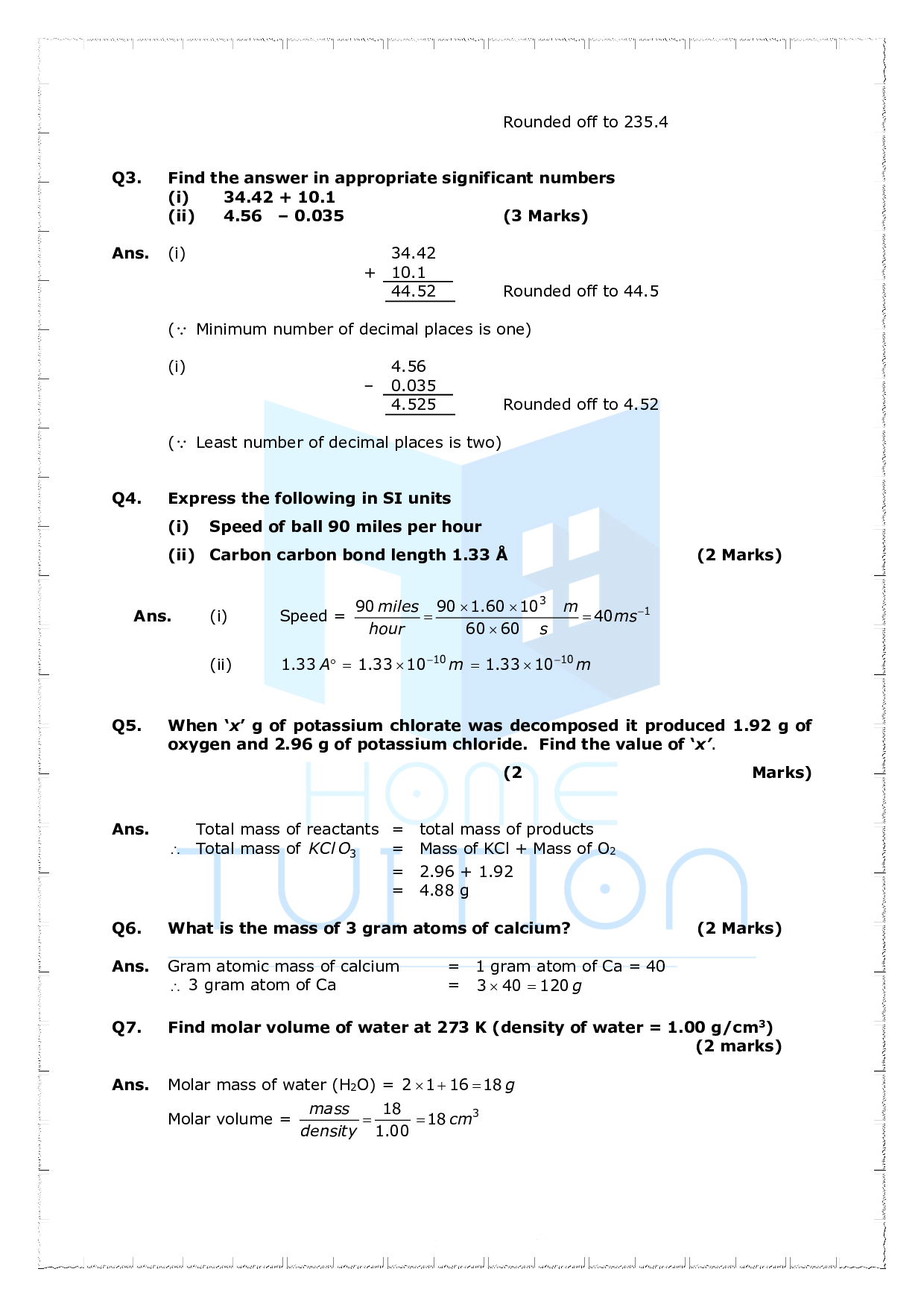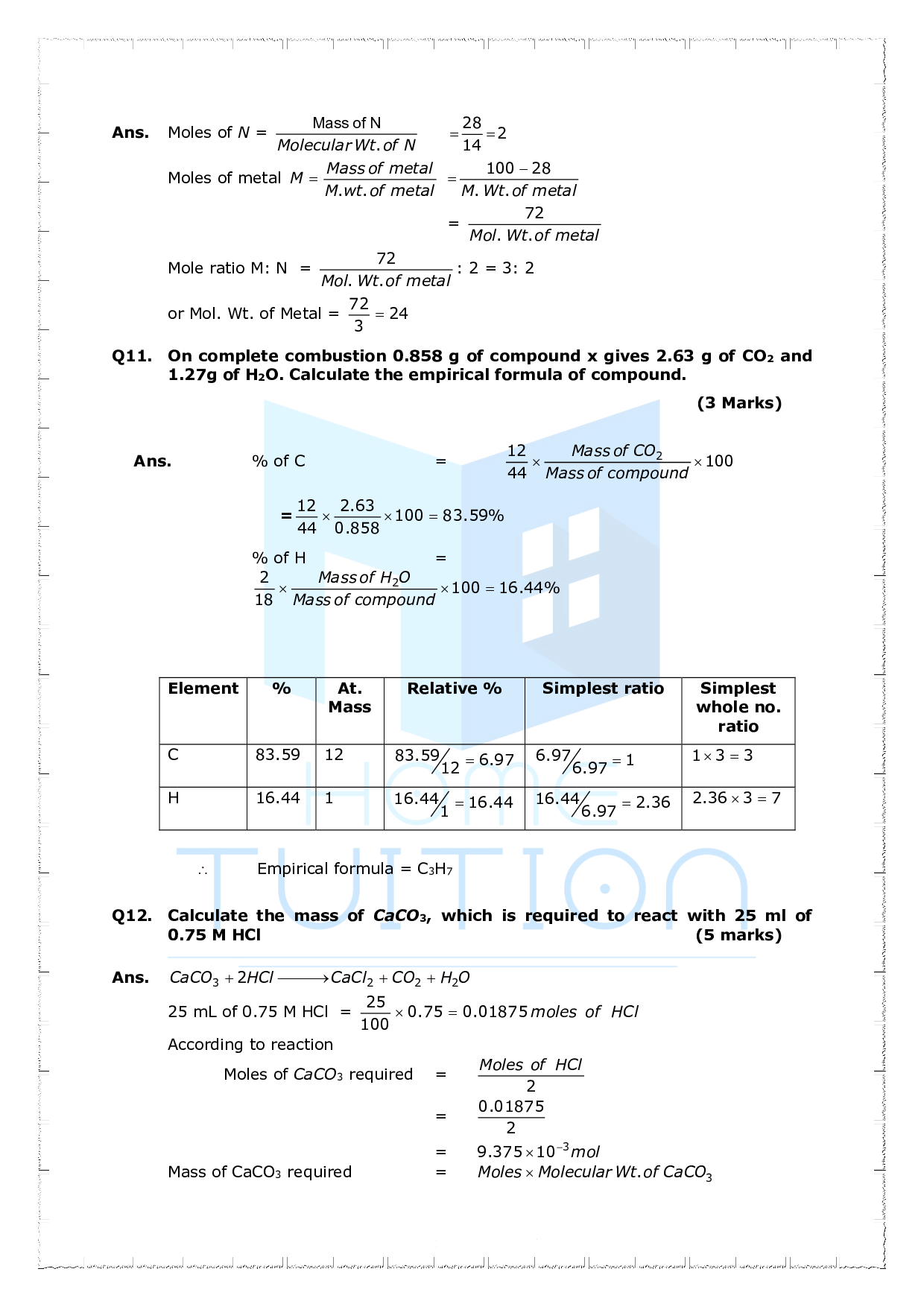
NCERT Solutions for Class 11 Chemistry Chapter 3 Classification of
on August 19, 2023, 11:05 AM. NCERT Solutions for Class 11 Chemistry Chapter 3 Classification of Elements and Periodicity in Hindi and English Medium modified and revised for academic year 2023-24. Class 11 Chemistry chapter 3 MCQ, exercise and intext question answers in Properties are updated for new CBSE session 2023-24.

CBSE Class 11 Chemistry Chapter 3 Classification Of Elements And
1. Explain the non linear shape of H 2 S and non planar shape of PCl 3 using valence shell electron pair repulsion theory. Answer. The main atom in H 2 S is S, which has two lone pairs. These lone pairs cause repulsion and displace the H-S bond, resulting in a non-linear shape. PCl 3 has a trigonal planar structure.

CBSE Class 11 Chemistry Chapter 3 Classification Of Elements And
Some Basic Concepts of Chemistry Class 11 Important Questions. Structure of Atom Chemistry Class 11 Chapter Wise Questions. Classification of Elements and Periodicity in Properties Important Questions. Chemical Bonding and Molecular Structure Important Questions. States of Matter Chemistry Class 11 Important Questions.

NCERT Exemplar Class 11 Chemistry Solutions Chapter 3 Classification
Topics and Subtopics in NCERT Solutions for Class 11 Chemistry Chapter 12 Organic Chemistry Some Basic Principles and Techniques: Section Name. Topic Name. 12. Organic Chemistry - Some Basic Principles and Techniques. 12.1. General Introduction. 12.2. Tetravalence of Carbon: Shapes of Organic Compounds.
Class 11 chemistry chapter 3 solutions CBSE Solutions
NCERT Solutions NCERT Class 11 NCERT 11 Chemistry Chapter 3: Classification Of Elements And Periodicity NCERT Solutions for Class 11 Chemistry Chapter 3: Classification of Elements and Periodicity in Properties NCERT Solutions Class 11 Chemistry Chapter 3 - Free PDF Download

Class 11 Chemistry Multiple Choice Questions Part 1
Question 2. Which important property did Mendeleev use to classify the elements in this periodic table and did he stick to that? Answer: Mendeleev used atomic weight as the basis of classification of elements in the periodic table. He did stick to it and classify elements into groups and periods. More Resources for CBSE Class 11 NCERT Solutions
Class 11 chemistry chapter 3 solutions CBSE Solutions
1. How many elements are known at present? Ans. There are about 114 elements known at present. 2. Who was the first scientist to classify elements according to their properties? Ans. The German Chemist, Johann Dobereiner in early 1829 was the first to consider the idea of trends among properties of element. 3.

Important Questions For Class 11 Chemistry Chapter 1 Some Basic
With the basic understanding and regular practice, students can score a good percentage in their board exams. Some of the benefits of NCERT Solutions for Class 11 Chemistry Chapter 3 includes: Class 11 Chemistry Chapter 3 solutions are provided by teachers who have several years of experience and are professional experts in this field.

Important Questions class 11 Chemistry Some Basic Concepts of Chemistry
The questions covered in Chemistry Class 11 Chapter 3 important questions are based on the vital topics included this Chapter 3: Why Do We Need To Classify Elements? Genesis Of Periodic Classification Modern Periodic Law And The Present Form Of The Periodic Table Nomenclature Of Elements With Atomic Numbers >100

NCERT Exemplar Class 11 Chemistry Solutions Chapter 3 Classification
Chapter 3 - Classification of Elements and Periodicity in Properties Chapter 4 - Chemical Bonding and Molecular Structure Chapter 5 - States of Matter Chapter 6 - Thermodynamics Chapter 7 - Equilibrium Chapter 8 - Redox Reactions Chapter 9 - Hydrogen Chapter 10 - The s-Block Elements

39 chemical formulas and equations worksheet answers Worksheet Works
Q1. Arrange s, p and d sub-shells of a shell in the increasing order of effective nuclear charge (Z eff) experienced by the electron present in them. Answer.

CBSE Class 11 Chemistry Chapter 3 Classification Of Elements And
Chapter 3: Classification of Elements and Periodicity in Properties Chapter 4: Chemical Bonding and Molecular Structure Chapter 5: States of Matter Chapter 6: Thermodynamics Chapter 7: Equilibrium Chapter 8: Redox Reactions Chapter 9: Hydrogen Chapter 10: The s-Block Elements Chapter 11: The p-Block Elements

Class 11 Chemistry Worksheet on Chapter 1 Some Basic Concepts of
Question 1. An element is present in the third period of the p-block. It has 5 electrons in its outermost shell. Predict its group. How many unpaired electrons does it have? Answer: It belongs to the 15th group (P). It has 3 unpaired electrons. Question 2. An element X with Z = 112 has been recently discovered.

Chemistry Class 11 Chapter 3 तत्त्वों का वर्गीकरण एवं गुणधर्मों में
Important Questions for CBSE Class 11 Chemistry Chapter 3 - Classification of Elements and Periodicity in Properties Last updated date: 21st Dec 2023 • Total views: 627.6k • Views today: 15.27k Download PDF NCERT Solutions CBSE CBSE Study Material Textbook Solutions CBSE Notes

Important Questions For Class 11 Chemistry Chapter 1 Some Basic
This final chapter in NCERT solutions for class 11 chemistry further discusses about ozone, acid rains and it's reactions. A total of 20 questions will help students understand various alternative tools required for reducing pollution. NCERT solutions for class 11 chemistry is the right recipe for students who want to go beyond marks in the.

Important Questions for Class 11 Chemistry Chapter 3 Classification of
11th Chemistry - Important Unit wise 2 Mark and 3 Mark Questions (Unit 1 to 7) Mr. F. Raja - English Medium - Preview & Download (MAT.NO. 211122) 11th Chemistry - Volume 1 Important 2 Mark and 3 Mark Questions Mr. A. Dinesh - English Medium - Preview & Download (MAT.NO. 212703)